Worm, Strawberry, Flower: The many names of full moons seen across the world
Skygazers in Singapore can expect the next full moon - dubbed the Pink Moon - on Apr 24.

A plane is pictured flying past the Worm Moon in Singapore on Mar 25, 2024. (Photo: AFP/Roslan Rahman)

This audio is generated by an AI tool.
SINGAPORE: Worm, Strawberry, Pink and Flower. The next time you see a full moon, know that each one in a year - there are typically 12 - carries a different and distinct name.
Far from being an assortment of random words, these descriptors can trace their roots to cultural observances that mark the changing seasons.
The first three months of the year saw the Wolf, Snow and Worm Moon illuminate the night sky in Singapore and the rest of the world.
Next in line is the Pink Moon, expected to make its appearance on Apr 24.
But what's in a name? The Science Centre Observatory (SCOB) of Singapore helped shed some light.
"For thousands of years, humans from ancient civilisations have often relied on the moon’s cycles to mark different time periods and establish rhythms for activities like hunting, farming and gathering," the observatory told CNA.
These names are also said to have traditionally come from Native American tribes. According to NASA, the Maine Farmers' Almanac began publishing Native American names for full moons in the 1930s.
Over time, these terms became widely known and were tied to European months, the US agency said on its website.

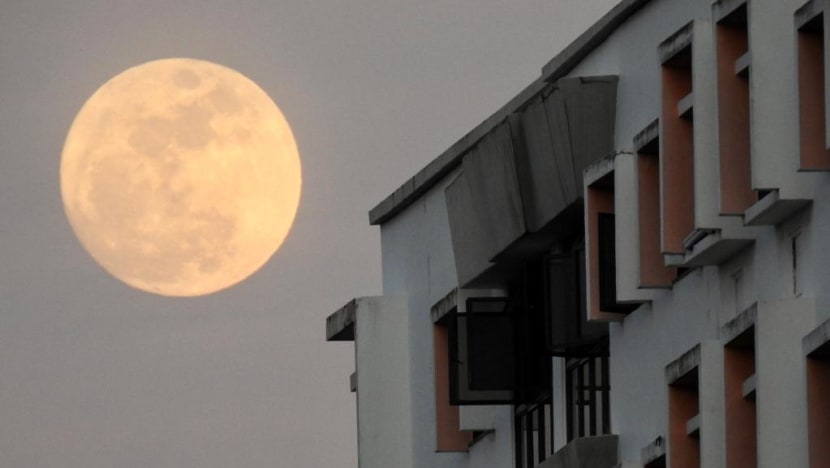
CHANGING OF SEASONS
The Wolf and Snow Moons at the start of the year have their names anchored in winter.
The howling of wolves was often heard in January while February typically saw heavy snowfall, according to The Old Farmer's Almanac's website.
The Worm Moon in March is so named because earthworms are said to appear as the ground thaws from winter.
Similarly, the Pink Moon in April and the Flower Moon in May have their monikers tied to springtime.
The Pink Moon is named after pink phlox wildflowers that bloom in North America in the early spring while the Flower Moon in May also describes the blooming of flowers, said SCOB.
June then sees the Strawberry Moon, referring to the relatively short season for harvesting the fruit in the US, said The Old Farmer's Almanac.
Leading the second half of the year is the Buck Moon in July. This is typically when new antlers begin appearing on buck deer, said NASA, adding that this full moon is also known as the Thunder Moon because of early summer's frequent thunderstorms.
August's full moon is named after the sturgeon in tandem with the belief that this fish is more easily caught during this period, while the Harvest Moon in September gets its name from being the closest to the autumnal equinox.
Rounding out the year and marking the transition into winter are the Hunter, Beaver and Cold Moons for October, November and December respectively.
| Full Moon Names | Dates in 2024 |
| Wolf | Jan 26 |
| Snow | Feb 24 |
| Worm | Mar 25 |
| Pink | Apr 24 |
| Flower | May 23 |
| Strawberry | Jun 22 |
| Buck | Jul 21 |
| Sturgeon | Aug 20 |
| Harvest | Sep 18 |
| Hunter | Oct 17 |
| Beaver | Nov 16 |
| Cold | Dec 15 |
While Singapore does not have specific names for each full moon, SCOB noted that lunar calendars and observances of the moon play a great part in many regional cultures and religions.
The Chinese celebrate Chinese New Year on the second new moon after the winter solstice and the Mid-Autumn Festival on the full moon in the eighth month of the lunar calendar.
Muslims mark the start of the lunar month with the first light of the new crescent moon while Buddhists celebrate Vesak Day on the day of the full moon in the sixth month of their lunar calendar, said SCOB, adding that Hindus celebrate Deepavali on the day of a new moon in the eighth month of the Hindu lunar calendar.
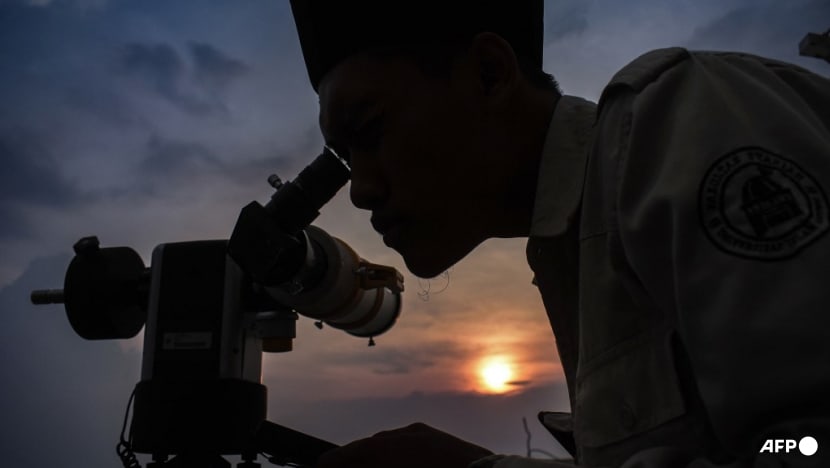
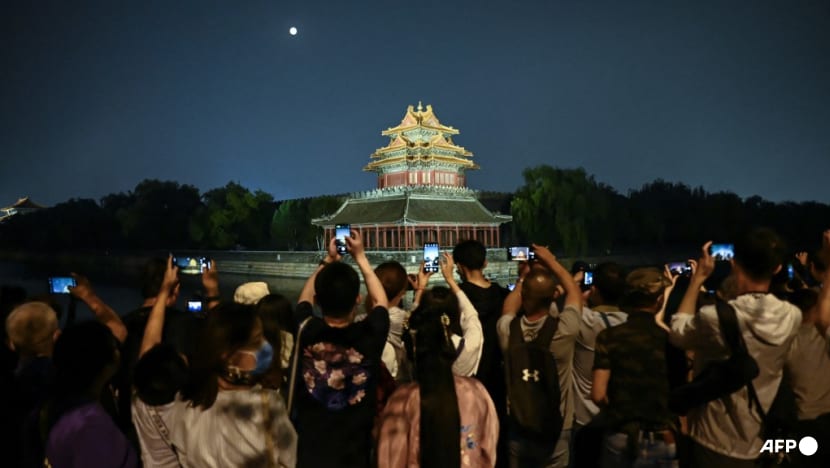
BLUE MOON?
The popular idiom describing something that happens very rarely is not just a figure of speech. It’s something that can actually be observed, but only once in a while.
There are two types of Blue Moons – monthly and seasonal.
NASA defines a monthly Blue Moon as the second full moon in a calendar month.
Occasionally, we are treated to two full moons in the same month. This happens because the moon’s cycle is about 29.5 days, slightly shorter than the average length of a calendar month, NASA explained.
This gap eventually results in a full moon occurring at the beginning of a month, with enough days remaining for another full cycle. This happens every two to three years.
A seasonal blue moon happens when there are four full moons in a single season instead of the usual three.
According to the Time and Date website, the next seasonal Blue Moon for Singapore will be on Aug 20 this year. Those eager for the next monthly Blue Moon will have to wait until May 31, 2026.
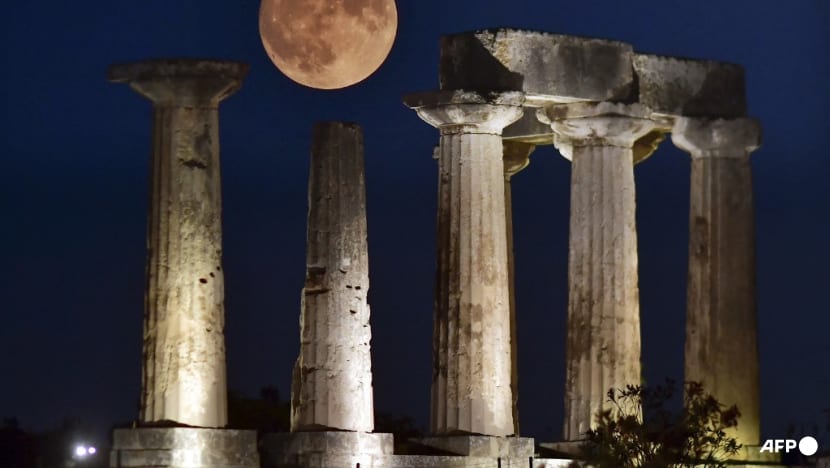
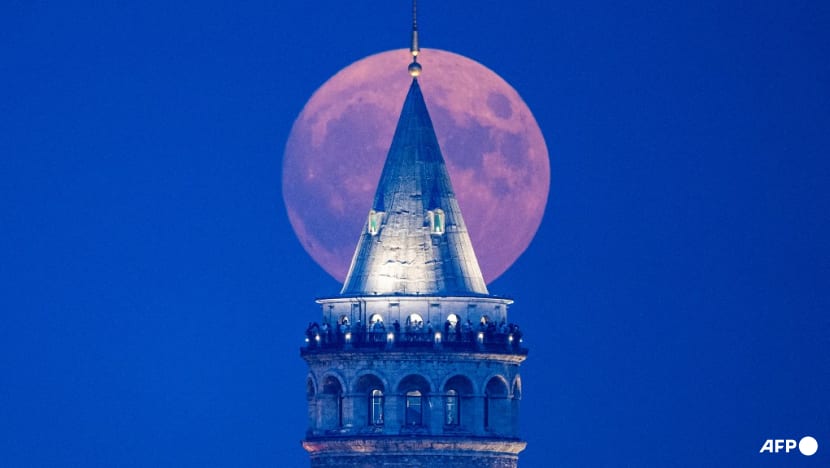
FULL MOONS, CELESTIAL EVENTS AHEAD
If you missed the Lyrids meteor shower that peaked over Singapore on Apr 22, there's always the Pink Moon on Apr 24.
The ideal window for catching April's full moon may be around 8pm to 9pm when it reaches a comfortable viewing height, said SCOB.
It will rise opposite the setting sun at 7.22pm and will begin to set at around 7.41am the next day.
This will be followed by the Eta Aquarids in May.
SCOB characterised the Eta Aquarids as an "above-average" meteor shower, giving stargazers the opportunity to catch about 60 meteors per hour at its peak.
It is expected to peak around May 5 to May 6 and the nearly new moon during this period will provide dark skies which will contribute to a better chance of viewing the shower, it said.
Four supermoons will then make back-to-back appearances in the later part of the year.
NASA describes supermoons as only occurring three to four times a year. They also always appear consecutively.
"While there is no official definition for the supermoon, these four full moons in August, September, October and November occur when the moon is relatively nearer to the Earth, causing it to appear brighter and more prominent," said SCOB.
"The full moon in October will be the nearest one to Earth whereas the full moon in August also happens to be the third full moon of the season, between Jun 20 to Sep 22, known as the Blue Moon."
According to NASA, supermoons can appear up to 14 per cent bigger and 30 per cent brighter than the faintest moon of the year. This also causes higher tides than usual.
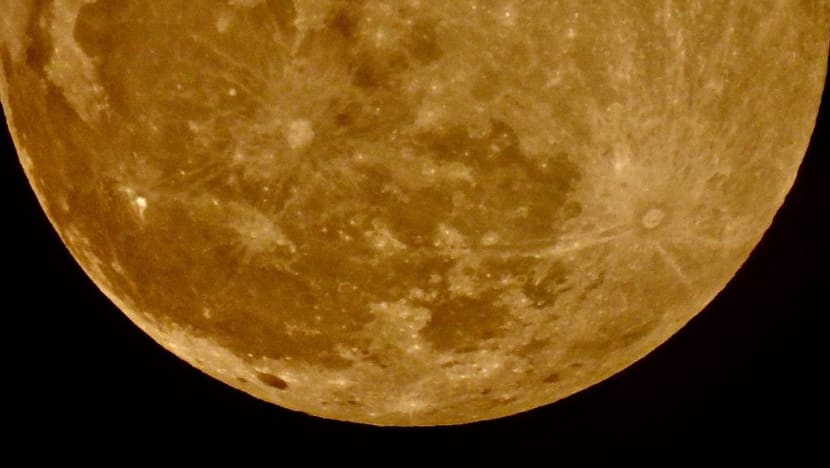

WHERE AND WHEN TO VIEW?
Those looking to appreciate the night sky should seek out unobstructed views and take note of key times and weather conditions.
"Marina Barrage, East Coast Park and the Southern Ridges offer a potentially elevated view of the supermoons and the city skyline," said SCOB.
"Generally, it is a good time to enjoy a supermoon close to moonrise or moonset, when the moon is close to terrestrial objects, trees or buildings that we are familiar with. The large apparent size of the supermoon will be more obvious when we have something to compare its size with. However, it’s worth noting that the moon’s appearance can vary depending on atmospheric conditions and your viewing location."
Those heading out during meteor shower season should also look for unblocked areas with minimal light pollution such as nature parks, beaches and reservoirs.
"We recommend stargazers to check out the position of the constellations and stargaze later into the night ... Avoid gazing directly at the radiant constellations and instead look at dark areas around it to spot the meteor streaks," advised the observatory.
Science Centre Singapore conducts stargazing sessions at its observatory on Fridays, with science educators on hand to share more about the night sky. Tickets for these sessions are available online.
Planning to catch the next supermoon or meteor shower? Send us your photos via CNA Eyewitness or on WhatsApp.
















